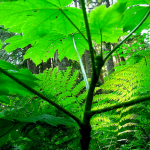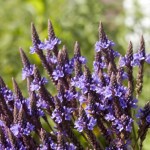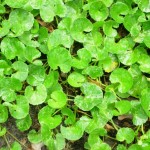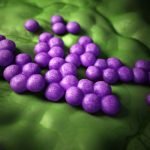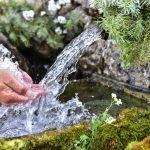Naturopathic Chakra Medicine: Spinning the Energetic Centers
Robin DiPasquale, ND, RH(AHG)
My teacher and friend Bill Mitchell used to speak of the herbs that correlated with each of the 7 chakras. Dr Mitchell’s herb choices represented the energetics of the plants that he perceived matched with the energetics of the chakras and what was calling for healing. He used to mix up his “Chakra Formula,” which included herbs for the 7 chakras. The formula included the herbs listed in Table 1.
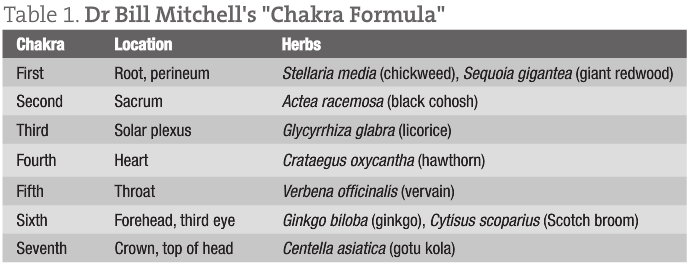
We can loosely conceive of the idea that each naturopathic chakra correlates with the workings of organs and glands within the system (Figure 1). Among the literature, there are some variations about the lower 3 chakras. Basically, the root chakra is linked to the gonads, ovaries, and testes, where the urge for life and survival is seated. The root chakra can be about the very primal essence of arousal, which is why it is often related to sexuality. The second naturopathic chakra is linked to life’s unfolding, the creativity with which we live our lives. For women, the womb or uterus is linked, but the primary related glands are the adrenal glands. The third naturopathic chakra is linked to power, with the pancreas being the expressing gland, both endocrine and exocrine functions. The fourth naturopathic chakra is related to the thymus gland, the fifth naturopathic chakra to the thyroid, the sixth naturopathic chakra to the pituitary, and the seventh naturopathic chakra to the pineal gland. The functioning of the related glands can influence what is the choice of herbs or other therapies and which chakra becomes a focus.
When I moved to Wisconsin, I met an herbalist, Jane Hawley Stevens, owner of Four Elements Herbals (http://www.fourelementsherbals.com/), who had developed a chakra garden on her herb farm. She chose plants to grow in each chakra bed in her garden based on what her perception was of the medicinal properties of the plants and how they correlated with the healing aspects of each chakra. As we explored her garden together, we discussed varying ideas about how we consider the plants in this way, and we continue to have ongoing discussions about why we think certain plants resonate with certain chakra energies. This is not something strictly defined but is more of an intuitive inquiry, something that each individual can come to within himself or herself about the relationship of which plants resonate with which chakra centers. The plants in Jane’s garden would themselves sometimes give feedback about where they resonate, hopping to different beds within her garden, not staying within the confines of their “assigned” chakra beds. Overall, however, this garden has given many visitors a beginning step in the consideration of the healing connection between plants and chakras. Table 2 gives some examples of the plants Jane grows in her garden and the chakra beds she plants them in.
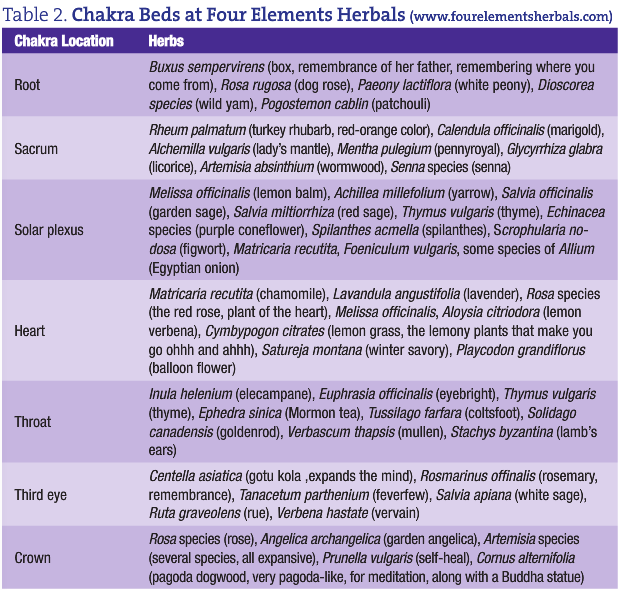
The energetic workings of the chakras and their associated organs and glands can be accessed through meditation and contemplative practice, through plant spirit medicine, through readings of many authors, and through the many associations with the application of chakra energy to healing. The 7 chakras can be correlated with the 7 original planets known in medieval times (Sun, Moon, Mercury, Venus, Mars, Jupiter, and Saturn). Seven is the sum of the numbers 3 plus 4. Three represents the 3 principles of alchemy (mercury, sulphur, and salt). Four represents the 4 cardinal signs (east, south, west, and north) and the correlating 4 elements (air, fire, water, and earth). When multiplied, 3 times 4 equals 12, representing the number of months in the year, the number of zodiac signs, and the number of meridians in the body. These links are all energetically connected to the many facets of the world we live in and to healing.
When assessing a patient through observation, physical examination, overall history of a case, and the energetics, it can become clear which chakra level may need support and healing. Using this mind-body approach, many of the therapies incorporated by NDs in our practices can be used to align with the chakras, including herbal medicine, essential oils, gemmotherapy, oligotherapy, flower essences, and homeopathic remedies, to enhance the healing of the patient. Colors and sound are also associated with the chakras and can be applied in healing ways. This article will focus on some examples of herbs and their correlations with the energies of the chakras, but I encourage each practitioner to apply these ideas, from your own knowledge and intuition, to the individual patients that you are working with and to the array of therapies.
The energy of the root chakra is grounding, connected to the earth, and rooting deeply into the depths of oneself. It is about stability, steadfastness, and remaining rooted in your life and all you do. Without this groundedness in the root chakra, everything else you do in life is lacking in foundation. The root chakra is linked to the gonads, the ovaries, and the testes, the house of the seeds, the potential for life. Seeds need to be rooted in the earth to germinate and sprout. The root chakra is often associated with the color red. I will often choose Ceanothus americanus (red root) to strengthen and solidify the energies of the root chakra. Ceanothus resonates with the magnetic field of the core of the earth, affecting the charge of the blood and aligning the electromagnetic field with the earth. Red root is known as spleen medicine. In Traditional Chinese Medicine, the spleen is the element of earth, that of digestion and assimilation of nutrients and removal of waste products. The spleen is integrally linked to the lymphatic system, acting as an alterative and moving fluid and qi throughout the entire body. Energetically, when you are rooted and connected to the earth through the root chakra, you are able to bring in nourishment and release waste more effectively. Breathe in the nourishment, and breathe out the waste. Ceanothus is a doorway from the unconscious to the conscious and from the underworld to the assimilation within the body and within the entire being.
In the area of aromatherapy, Vetiveria zizanioides (vetiver) is the most grounding of all the oils. It is the distillation from a grass that grows 6 ft high with deep penetrating roots that spread, creating a mat within the earth. Vetiver has a base note to its oil, used often in combination with top note floral oils because of its ability to bring the earth energy to the blend.
The second chakra (sacrum) can be supported with genitourinary herbs, one of the most prominent being Nymphae odorata, the white pond lily. This plant is considered a kidney yin tonic, bringing coolness and moisture and restoring stamina. Energetically, it connects the root buried deep in the mud with the leaf floating on the top of the water through a long umbilical cord–like stem, symbolic of the cord of life. The adrenal glands are also correlated with the second chakra, so adrenal herbs are well placed at this level. One of my favorite combinations for support at this chakra level is Glycyrrhiza glabra (licorice) and Panax quinquefolius (American ginseng). Glycyrrhiza has the ability to increase the half-life of the cortisol that is secreted from the adrenal glands, supporting function and allowing the opportunity for rest and recovery. It is demulcent and sweet, soothing mucous membranes and bringing nourishment on many levels. It is at the creative energetic level, when stifled or stagnant, that the craving for sweets can arise, which can then manifest as a dysfunction in the third chakra at the level of the pancreas. American ginseng combines the taste of dirt, the earth element, with the sweetness that can fulfill that deep craving. Very different from Asian ginseng, P quinquefolius is cooling and nourishing and, when combined with licorice, can energetically balance both the second and third chakras.
The solar plexus is the place of power, which can be expressed as too much power or too little power. The color associated with the third chakra is often yellow, which could be represented by the many yellow flowers on the planet, including our beloved Taraxacum officinale, the dandelion. The root of the dandelion can be used to support the digestive process and the regulation of blood sugar, so it is an effective choice for this core location. However, I find that many people do not express their power effectively and are often dampened down by either childhood patterns or some trauma that occurred in their adult lives. Oplopanax horridus (devil’s club) is the herb I choose most often for the third chakra (Figure 2). Oplopanax is a northwest plant that grows in wet areas, covered by prickles or spines on the stems and leaves. Its medicine is about standing up for yourself, being strong in what you believe in, and holding strong in your place of power. It is interesting to note that Oplopanax is also one of the most effective herbal remedies for rebalancing blood sugar dysregulation, amphoteric for both hypoglycemia and hyperglycemia.
Figure 2.
At the level of the heart chakra, we can certainly appreciate Bill Mitchell’s choice of Crataegus oxycantha (hawthorn), this being the quintessential herb for the heart. Beyond hawthorn, I have to reach for the combination of Ocimum sanctum, also known as tulsi or holy basil, and Rosa species, the beloved rose. The holy basil, sacred to all Hindu families in India, sits at the center of the home, tended to daily by the matriarch of the family. Its adaptogenic properties link it with the adrenal glands, the third chakra, while its healing properties as a lung remedy—its greenness opening the airways and expanding the exchange of air, essential for life—link it up to the fourth chakra. Tulsi is connected to the emotions of love, hope, and surrender to another, all being important components of its sacred energy resonating at the level of the heart, the fourth chakra. The rose is a symbol of the unfolding of the heart. The rose opens the heart energy outward, and just the sight of the open rose flower can initiate the opening of the heart at the center of our being. The scent of rose has become one of the most precious of the essential oils. It takes 67 blossoms to make 1 drop of rose essential oil.
The throat chakra is a reflection of communication. This is the home of the vocal cords, larynx, and ability to speak your truth. The Lakota people called forth the healing properties of Ligusticum porteri, osha medicine, by placing a small piece of root in their cheek to facilitate opening of the throat and expression of the voice when singing and drumming in ceremony throughout the night. Ligusticum has an affinity for healing the throat on many levels. It is antiviral, antibacterial, expectorant, and antitussive and can act to anesthetize the pharynx and larynx. Osha contains a high amount of volatile oils and makes a very exquisite miel or syrup, an effective way to coat the throat with its medicine. The other aspect of the throat chakra has to do with the thyroid gland. When there is a thyroid imbalance, it is important to look beyond whether the gland is hypoactive or hyperactive to why this area of the body is the target gland. Biotherapeutic drainage can assist in clearing accumulated effects on the thyroid gland, both physically and emotionally.
The pituitary gland, with all its directives to the rest of the glandular system, is associated with the sixth chakra. The nervous system has a pivotal role at this chakra as well, being the interface of neurotransmitter activity and that of the thinking mind. The sixth chakra has 2 distinct components, the mental side (ruled by thought) and the psychic side (ruled by intuition and inner listening). Mental chatter can block out the ability of the psychic side to bring forth intuition. For some people, this needs to be quieted to allow their “third eye” to see clearly. If the mental side of this chakra is dominant, I will often use the herb Verbena hastate (vervain) (Figure 3). Vervain is a nervine that has the ability to soften and quiet the frazzled nerve endings that occur with too much mental energy. In this state, the body is not able to relax, and the tension is felt throughout the musculoskeletal system and the digestive system. Verbena is a bitter, which can help to put the gut into parasympathetic nervous system mode, facilitating digestion and quieting the gut-brain chatter. When considering the Bach flower essence of vervain, the picture is of someone who has an intensity of ideas about himself or herself, an idealism, which can block the flow of their energy and those around them. To further develop the psychic side of the sixth chakra, the third eye, an herb that brings expansion of the mind, can be used. The one I use often in this situation is Artemisia vulgaris (mugwort). Mugwort has been historically used in dream pillows, referred to as the “bringer of dreams.” It can increase dreams and enhance the ability to remember dreams. Taken as a tea, burned as a smudge, applied topically in a foot bath, or spread on the feet and hands as a salve, A vulgaris can help facilitate the “opening” of the third eye, which can bring the workings of the sixth chakra more into the psychic realm.
Figure 3.
The energy of the crown chakra is about opening to the heavens through the crown of the head, connecting with the electrical forces of the universe, and allowing these to flow through the body to join with the magnetic forces of the earth energy in the heart. The crown chakra is about connecting with the higher realms, the cosmos. I agree with Dr Mitchell’s choice of Centella asiatica (gotu kola) as a crown chakra herb (Figure 4). Centella is often taken to balance anxiety and depression. It has the ability to rebalance the body when there is extreme mental and physical fatigue, in this way acting as an adaptogenic herb. It can lift the energy during meditation, allowing the body to work toward that higher connection. I find that a cup of Centella tea or a dropperful of tincture before meditation can assist with getting into a quiet, contemplative, expansive place. However, there is an herb whose primary purpose seems to be to lift the mind to the spiritual and to strengthen the connection to the spirit. This is the essential oil of Santalum album (sandalwood). Inhaling the scent of sandalwood quiets the mind, improves concentration, and is opening, centering, relaxing, harmonizing, and balancing. Being a cold and dry remedy, it can clear bogginess, fogginess, and liver heat, especially liver fire. Clearing liver fire helps to release held angers and resentments, allowing the spirit to ascend.
Figure 4.
A list of references that give more information about naturopathic chakra medicine is included herein.1-15 It is in the realm of mind-body medicine that the deeper sense of healing can truly happen. Healing is a process—something done over time, beyond the physical, and individual and unique to each person. In using our naturopathic skills, keen observation, excellent listening, a total presence with each person, and the appropriate application of our many therapeutic tools, we will be able to witness and assist patients with true healing.
 Robin DiPasquale, ND RH (AHG), earned her degree in naturopathic medicine from Bastyr University in 1995 where, following graduation she became a member of the didactic and clinical faculty. For the past eight years she has served at Bastyr as department chair of botanical medicine, teaching and administering to both the naturopathic program and the bachelor of science in herbal sciences program. Dr. DiPasquale is a clinical associate professor in the department of biobehavioral nursing and health systems at the University of Washington in the CAM certificate program. She loves plants, is published nationally and internationally, and teaches throughout the U.S. and in Italy on plant medicine. She is an anusara-influenced yoga instructor, teaching the flow of yoga from the heart. She currently has a general naturopathic medical practice in Madison, Wis., and is working with the University of Wisconsin Integrative Medicine Clinic as an ND consultant.
Robin DiPasquale, ND RH (AHG), earned her degree in naturopathic medicine from Bastyr University in 1995 where, following graduation she became a member of the didactic and clinical faculty. For the past eight years she has served at Bastyr as department chair of botanical medicine, teaching and administering to both the naturopathic program and the bachelor of science in herbal sciences program. Dr. DiPasquale is a clinical associate professor in the department of biobehavioral nursing and health systems at the University of Washington in the CAM certificate program. She loves plants, is published nationally and internationally, and teaches throughout the U.S. and in Italy on plant medicine. She is an anusara-influenced yoga instructor, teaching the flow of yoga from the heart. She currently has a general naturopathic medical practice in Madison, Wis., and is working with the University of Wisconsin Integrative Medicine Clinic as an ND consultant.
References
1. Eden D. Energy Medicine. New York, NY: Penguin Putnam Inc; 1998.
2. Gawain S. Creative Visualization. Mill Valley, CA: Whatever Publishing; 1978.
3. Gerber R. Vibrational Medicine. Santa Fe, NM: Bear & Company; 1988.
4. Holmes P. The Energetics of Western Herbs. Boulder, CO: Snow Lotus Press; 1994.
5. Manuchehri M. The Seven Primary Chakras [CD].
Kirkland, WA: Marie Manuchehri; 2006. http://www.energyintuitive.com. Accessed April 28, 2011.
6. Moore M. Medicinal Plants of the Mountain West.
Santa Fe: Museum of New Mexico Press; 1979.
7. Myss C. Anatomy of the Spirit. New York, NY: Three Rivers Press; 1996.
8. Potts B. Witches Heal. Ann Arbor, MI: DuReve Publications; 1988.
9. Scheffer M. The Encyclopedia of Bach Flower Therapy.
Rochester, VT: Healing Arts Press; 1999.
10. Tilgner S. Herbal Medicine From the Heart of the Earth.
Eugene, OR: Wise Acres Press; 1999.
11. Villoldo A. Shaman, Healer, Sage. London, England: Bantam Books; 2000.
12. Villoldo A. Healing the Luminous Body [DVD]. Ashland, OR: Sacred Mysteries Productions; 2004.
13. Willard T. Edible and Medicinal Plants of the Rocky Mountains and Neighbouring Territories. Calgary, AB: Wild Rose College of Natural Healing Ltd; 1992.
14. Wood M. The Book of Herbal Wisdom. Berkeley, CA: North Atlantic Books; 1997.
15. Wood M. The Earthwise Herbal. Berkeley, CA: North Atlantic Books; 2008.



